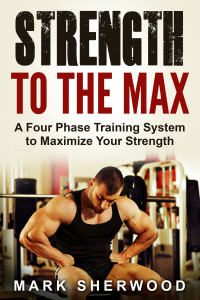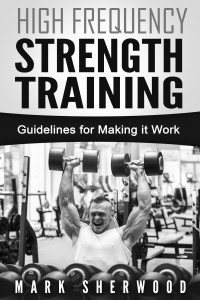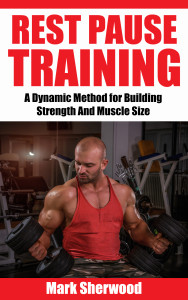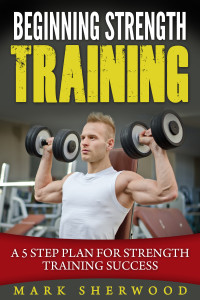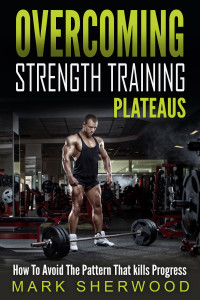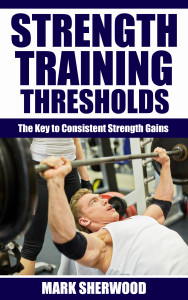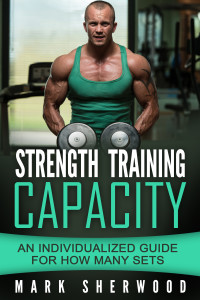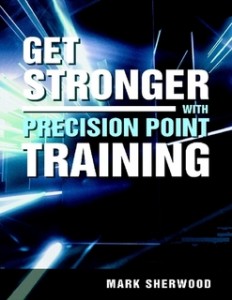Precision Point Training is based upon the research and trial and error training experiences of Mark Sherwood. Mark is an exercise enthusiast who has been involved in strength training for over 30 years. He received a BS degree as an Exercise Specialist from the University of Wisconsin Madison in 1986 and has worked as a physical education instructor and coach for various sports for 15 years as well as serving as a fitness instructor. In addition to the formal education he received in the area of exercise and physical education, he has been on a personal quest to distinguish between strength training concepts that produce consistent strength gains as opposed to strength training concepts that are either temporarily effective or not effective at all. Through a process of trial and error, Mark has navigated the vast maze of training methods to uncover training methods that consistently work as opposed to those that either don’t work consistently or don’t work at all. This has been combined with much thought, prayer, and study in regard to exercise methods and exercise physiology. The outcome of this is the formulation of the strength training principles that have proven to stand out above the others in their effectiveness and consistency. These principle are the principle he teaches in Precision Point Training. It is his desire to give people the knowledge that took him years to uncover, and to help others succeed who are on their own quest to find out the best way to gain strength.
Mark’s Story and the Formulation of Precision Point Training
When I first began weight training in 1979, my workouts were very random in nature and produced little results. After about a year, I decided to get a muscle magazine to see if I could gain some information from the champions who had successfully built outstanding size and strength. I had never seen so many big, strong physiques in my life. Did they have a secret? I wanted to find out what they were doing to achieve such incredible results. I carefully studied how these champions were working out. When I put some of the ideas into practice, I started getting results. Within a few months my bench press and squat had both shot up by about sixty pounds, and my dead lift increased by close to one hundred pounds. I was excited and looked forward to gaining a phenomenal amount of strength. However, my gains suddenly slowed down a lot. I was only able to gain a little more strength over the next couple of years before the gains completely stopped.
Fortunately, I loved training and learning about how to train, so it never occurred to me to do anything but keep training and studying to see if there were better ways to train. It was both joyous and miserable. There were so many ideas but I had no idea which ideas were right or if right even existed. Every new muscle magazine and strength training magazine presented me with another set of articles on champions and how they trained. It was so fun to read about all the different training methods, but so confusing.
There seemed to be an endless maze of training philosophies. Of course there were general things that I read that seemed to be applied somewhat consistently by the majority of the champions. I learned that most champions train each body part either two or three times per week. The majority of them did common exercises like the bench press, squats and curls. Beyond that, it seemed that anything you could dream up for a training method was being used by a champion somewhere. In spite of the fact that most of them trained each body part two or three times per week, I read about a champion who trained his whole body every day. Others trained each body part once per week. Some were claiming that one to three sets per body part was enough training. Others were doing 20 sets, 30 sets, or even more. Most used medium to heavy weights that allowed them to use between five to twelve repetitions per set, but some used mostly light weights that allowed them to use 12-20 repetitions. Believe it or not, there were both power lifters and body builders who claimed to occasionally use up to 100 repetitions for a single set.
Then there were the more common methods of training that had been around for years like using 3 sets of 8-10 reps for one exercise. There was the 5 sets of 5 reps routine for strength, and the commonly used muscle building routines such as: 6 sets of 6 reps, 8 sets of 8 reps, and 10 sets of 10 reps. Let’s not forget the forever popular pyramid method of using a light weight for about 12 reps and then increasing the weight for the next 3 sets while decreasing the amount of reps for each set.
How hard you should train seemed to be another confusing issue. The articles on training a body part used words like bombing, blasting, blitzing, high intensity, and going for the burn when referring to how hard these guys were training a body part. There was an endless list of torture methods for inflicting your muscles with pain. It seemed like using these methods were the secrets that were utilized by the committed few who were serious about success. These were the only ones who were sold out to the point where they were willing to face the necessary progression of pain. The first step to this pain was to train to failure. This was to be followed up with forced reps and partial reps for a scorching burn. You could go even further with all of this pain and push yourself to do negative reps if you still wanted more. Let’s not forget rest pause sets and omni contraction sets. Of course you had to try super sets, compound sets, pre-fatigue sets, giant sets for one body part with no rest between sets, and you could also do triple drop strip sets if you really meant business. It seemed that lifters were dreaming up new ways to train a body part harder and harder, and then they would figure new ways to train harder than that. If you were serious, you couldn’t wait to try them all; at least I couldn’t. Serious lifters had to at least be willing to throw up. One lifter I read about trained so hard he popped blood vessels in his eye, another would pass out, still another would get a bloody nose while training. We were to believe that this type of sincerely hard training is what made champions.
The crazy part would be that you would read an article about how to train harder, and then flip over to another page and read about an expert who was warning you not to train too hard. One person might tell you to be consistent and keep training the same way while another would advocate the need for constant change. There was no end to the contradictions of opinions, philosophies and methods. It was pure madness.
As time progressed, I began to notice that strength based training programs tended to be more systematic than bodybuilding based training. I began to run into the idea of periodization more and more. This was based on formulating a plan that consisted of calculated phases and variations in training. You can find endless schemes of how to change training volume and training load while making strategic exercise changes. Of course tapping into the right training variation was seen as the key to making you grow stronger by the end of a training cycle, but which training cycle was best? With so many training possibilities and philosophies, how could you know with any accuracy how to train?
I don’t claim that there is one workout or workout series that is best for every single person, but I do believe there are concepts that will work for anyone and help bring more consistent results to your training. The concepts are not based on how someone else’s body works, or on a secret that will give you a super body within a few minutes of exercise that is done once or twice per week. The concepts are definitely not based on how hard you can push yourself and how much pain you can take. The concepts are based on how your body works and on what your body thinks are the most favorable conditions for building strength.
What type of conditions does your body desire in order to gain strength? After 34 years of trying everything I have read plus more, I have found that there are some training variables that are easily overlooked, yet they are foundational to strength training. More than all of the training schemes and variations of sets, reps and weight, I have found that a precise training state is what leads to progress more than anything else. This means knowing the precise point to stop during a set of an exercise and knowing how many sets to do while finding the most beneficial training frequency. These things are not initially preplanned, but Precision Point Training provides some diagnostic methods for determining them. This basic knowledge is what has proven to provide a form of training that is more effective than anything that I have ever tried for gaining strength on a progressive basis.
Books by Mark
Click on images to go to bookstore

